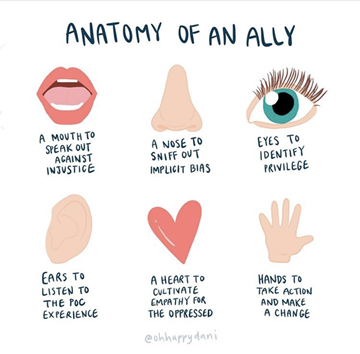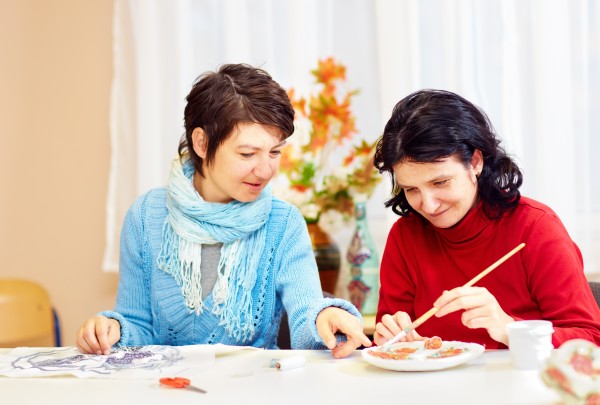Last year, the United States celebrated the 30th anniversary of the 1990 Americans with Disabilities Act, a law that broadly prohibits discrimination against people with disabilities. Three decades after this landmark law, it is time to reflect on the progress made towards total inclusion of people with disabilities within our communities. There have been numerous initiatives over thirty years to ensure that people with disabilities enjoy the same rights and freedom as those without, from grassroot efforts like the Barrier-Free Health Care Initiative which inhibits refusal of health care services to people with disabilities and mandates to provide basic accommodations for people with disabilities to cast their vote, to systemic efforts such as reinforcing the Olmstead v. L.C. ruling advancing community integration of people with disabilities.
Although immense progress has been made through advocacy efforts by people with and without disabilities, more work is warranted to ensure future generations of children with disabilities are born into a world without discrimination.
As about one in four adults in the U.S. experience a disability, adults without disabilities wonder what role they can play in ensuring equity for people with disabilities. Some advocate actively for the rights of people with disabilities, while others stand alongside people with disabilities, serving as their allies and supporting advocacy efforts.
Who is a disability Ally?
A person with a disability defined an ally as ‘someone who supports the cause of a marginalized group — women, people of color, people with disabilities, people in the LGBTQ community, people with low income, etc. — and uses their privilege to learn from that group and amplify their cause.’

How can local health departments foster disability allyship?
Educate staff about disability, ableism, cultural competence and humility, microaggressions and implicit biases.
The first step towards being an effective ally is to be educated about the basics of disability, including types of disabilities and the laws and policies regarding disability. To induce structural-level changes in societal beliefs and norms, being updated about initiatives by members of other disenfranchised groups in the community may be beneficial. Raising disability awareness also means allies must be educated about ableism, microaggressions, and implicit biases. Ableism is the denigration of people with disabilities due to feelings of superiority by those without disabilities. Microaggressions are acts, words, or body-language that cause subtle, unintentional discrimination against people who are marginalized. Implicit biases are attitudes and stereotypes that a person might harbor subconsciously against a group of people.
Learn Disability Etiquette
Parallel to educational efforts, using appropriate language with and about people with disabilities is an important trait for an ally. Language around disability is constantly evolving, so health department staff should keep themselves updated on language use. Fear of misspeaking should not impede people without disabilities from openly communicating with those with disabilities. In the same vein, over sensationalizing disability, known in the disability community as inspiration porn, by applauding people with disabilities for being able to perform common tasks should also be avoided. When in doubt, it is best to ask the person with a disability about the appropriate language to use, with the caveat that people with disabilities also have varied opinions on language use. While some people with disabilities proudly identify themselves with their disability, others may not be as open to discussing their disability. Public health professionals are strongly encouraged to undertake annual refresher trainings on disability etiquette and spread the messaging to their communities via media campaigns.
Invite people with disabilities to the discussion table
Just like how reading a cookbook is only the first step toward learning cooking, reading about and completing trainings on disability awareness is only the first step in achieving cultural humility or cultural competence. Engaging in both formal and informal conversations with people with various types of disabilities is key to understanding lived experiences of people with disabilities. Some public health departments invite people with disabilities to be an integral part of workgroups and planning committees. Better still is if health department officials sit at the table of community-based groups and organizations led by people with disabilities. National organizations with state and local chapters like The Arc and Centers for Independent Living that advocate for people with disabilities can be great resources for recruiting members with disabilities for conversations.
Sustain Relations with community members with disabilities
Once public health departments initiate a dialogue with people with disabilities and organizations that support them, there also needs to be sustained efforts to strengthen these partnerships. This can happen by hosting joint events, having representatives from the community lead periodic trainings for public health professionals, and actively participating in initiatives led by community-based organizations.
Disseminate knowledge and experiences to the community
Public health departments can catalyze active allyship in their jurisdiction by sharing their knowledge and experiences with members of their community. Symbiotic knowledge sharing between various organizations especially those led by, and for, other marginalized members of the community can also help in identifying best strategies to promote allyship. This process would also benefit health department professionals in gaining greater understanding that people with disabilities, just like those without disabilities, have multiple identities.
Public health professionals can play a vital role in serving as, and fostering, disability allies within their jurisdictions. It is a timely opportunity for health departments to strengthen the community’s trust by rolling out initiatives to promote greater inclusivity of all marginalized populations including people with disabilities.
Additional Resources
- What is the Americans with Disabilities Act (ADA)?
- Disability Impacts All of Us
- How to be an ally of the disability community
- Words with dignity
- Examples of Disability Microaggressions in Everyday Life
- Be An Ally
- Health Care and Community-Based Organizations Have Finally Begun Partnering To Integrate Health And Long-Term Care
References
- Greene-Moton, E., & Minkler, M. (2020). Cultural Competence or Cultural Humility? Moving Beyond the Debate. Health Promotion Practice, 21(1), 142–145. https://doi.org/10.1177/1524839919884912
- Greenwald, A. G., & Krieger, L. H. (2006). Implicit Bias: Scientific Foundations. California Law Review, 94(4), 945. https://doi.org/10.2307/20439056
- Johnstone, C. (2004). Disability and identity: Personal constructions and formalized supports. Disability Studies Quarterly, 24(4). https://dsq-sds.org/article/view/880/1055



